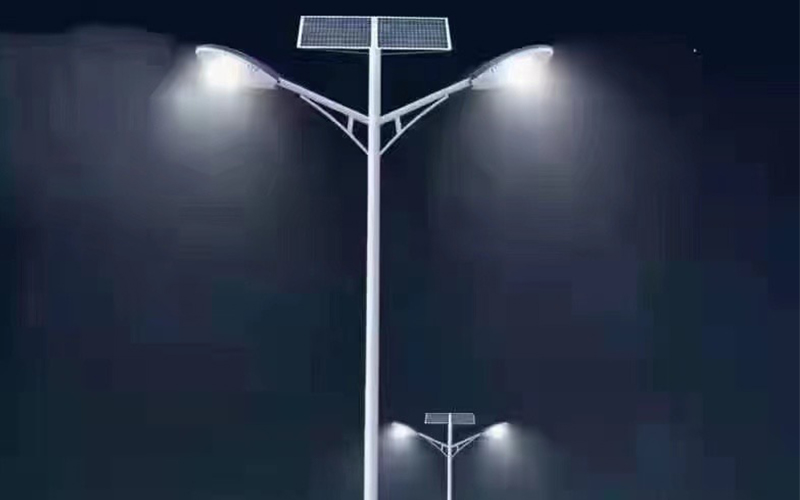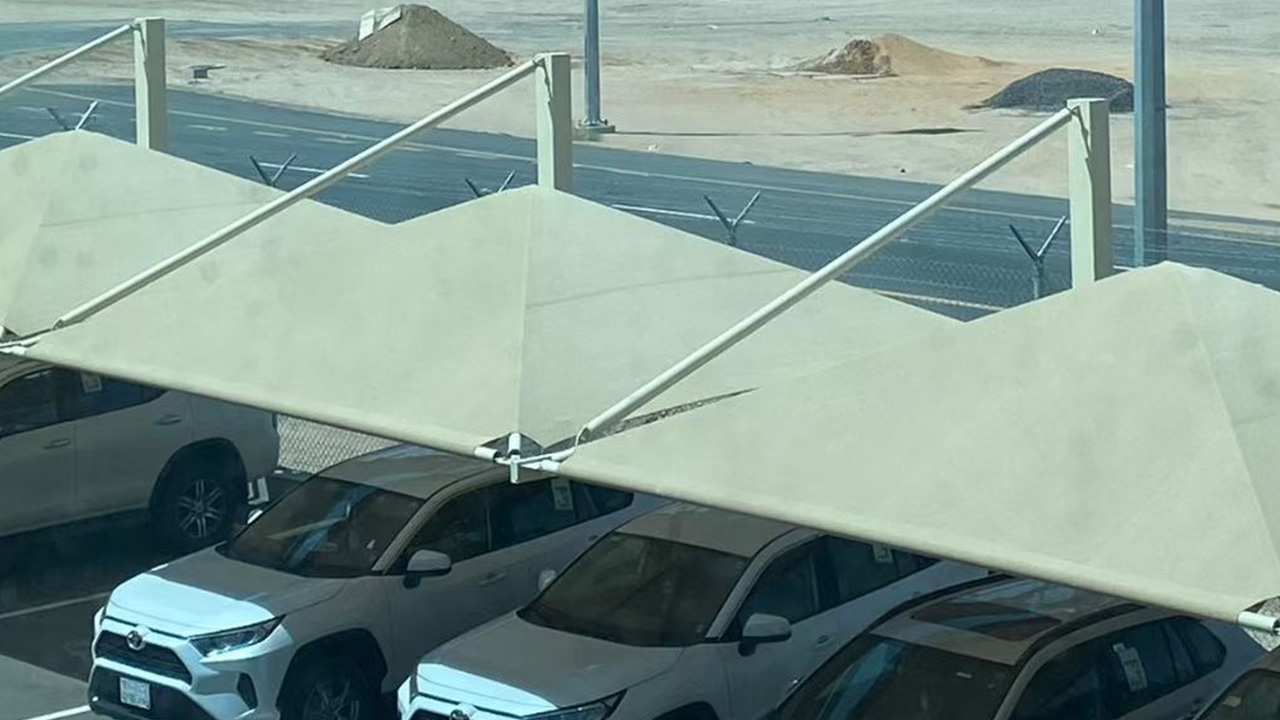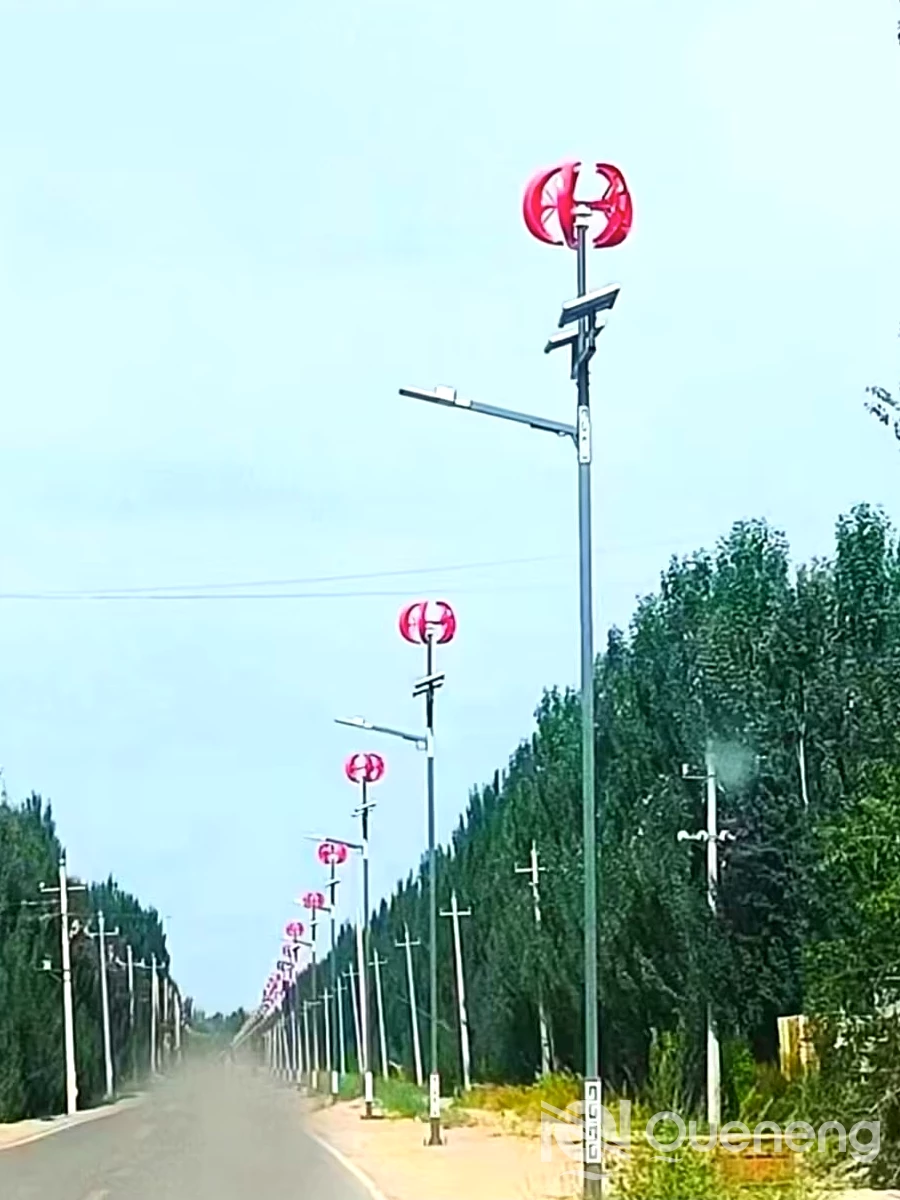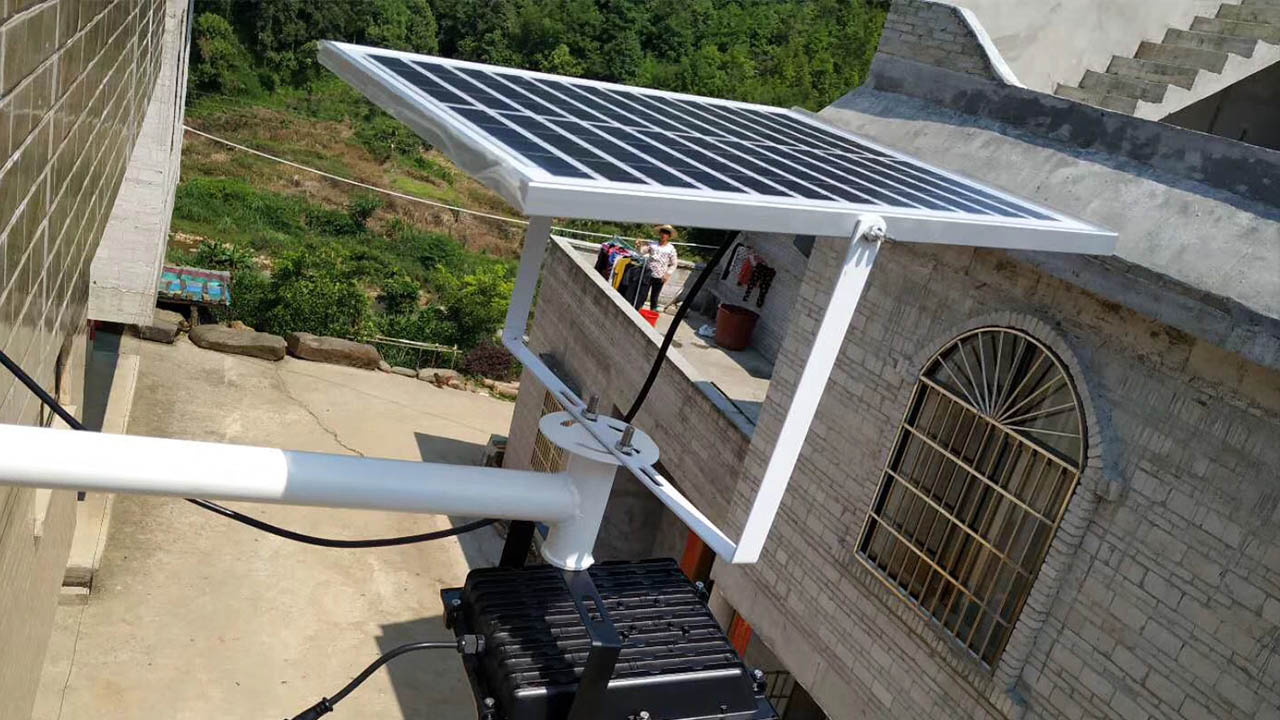Are Solar Energy Street Lights Worth It? Real-World Case Studies
Discover if solar energy street lights are worth the investment with Queneng. Explore real-world case studies, benefits, and reliable solutions for efficient, sustainable outdoor lighting. Make an informed choice for your projects with Queneng’s expertise.
Introduction
As cities strive for sustainability, one solution is lighting the way forward - literally. Solar energy street lights are gaining popularity in urban and rural landscapes, promising zero electricity bills and environmentally friendly lighting. But are they really worth the investment?
Governments, businesses, and developers alike are intrigued by the promise of solar-powered streetlights but also question their practicality, durability, and long-term value. While the idea of self-sustaining, off-grid lighting systems is appealing, concerns remain about initial costs, maintenance, and performance.
This article examines whether solar-powered street lighting lives up to its promise. Through detailed case studies in Saudi Arabia, Malaysia, and China, we analyze their performance in a variety of real-world conditions. If you're considering switching to solar, this comprehensive guide offers valuable insights into their benefits, limitations, and overall value.
What Are Solar Energy Street Lights?
Solar energy street lights are autonomous lighting systems that utilize photovoltaic technology to convert sunlight into electricity. Unlike traditional grid-connected lighting, these units operate independently and typically consist of the following components:
Solar Panel: Converts sunlight into electrical energy.
Battery Storage: Stores energy during the day for nighttime usage.
LED Fixture: Provides high-lumen lighting with minimal energy consumption.
Controller: Regulates power distribution between the panel, battery, and light.
Pole and Mounting Bracket: Ensures correct positioning for maximum solar absorption.
A solar LED street light integrates energy-efficient LED technology with solar power, allowing for bright and uniform lighting with significantly reduced energy consumption. Modern designs feature motion sensors, smart controls, and weather-resistant casings—making them ideal for solar street light outdoor installations in varied environments.

Key Advantages of Solar Energy Street Lights
Zero Electricity Costs
By harnessing solar energy, users eliminate grid electricity dependence. This translates into substantial long-term savings, especially in areas with high electricity tariffs or limited access to infrastructure.
Easy Installation
Because solar panel street lights are stand-alone systems, they do not require trenching, cabling, or connection to a central power grid. This is particularly beneficial in rural or hard-to-reach areas.
Eco-Friendly Lighting
Powered by clean, renewable energy, these lights produce no carbon emissions during operation. By switching to solar, municipalities and private firms contribute to environmental protection and national carbon neutrality goals.
Low Maintenance
Most modern solar street lights come with durable components, including lithium-ion batteries with battery management systems (BMS) and corrosion-resistant materials. With fewer moving parts and no grid connection, maintenance is minimal.
Ideal for Remote/Rural Areas
With no dependency on external infrastructure, solar powered street lights can be deployed in regions where conventional lighting would be prohibitively expensive or logistically impractical.
Challenges and Considerations
High Upfront Costs
The initial investment for a solar energy street light is higher than traditional systems. Costs include the solar panel, battery, LED fixtures, and smart controllers. However, over time, these costs are typically offset by energy savings and minimal maintenance needs.
Battery Lifespan and Replacement
Batteries are the heart of the system. Most lithium-ion batteries last 5–7 years, after which they need replacement. Replacement costs must be factored into the total cost of ownership.
Weather Dependency
Inconsistent sunlight due to overcast skies or extreme winter conditions can affect battery charging and, in turn, light performance. Solar street light suppliers often address this with oversized panels or extended battery capacity.
Security Concerns
Being installed in open spaces, solar panel street lights are susceptible to theft or vandalism. Installing units with integrated anti-theft bolts or surveillance-compatible features can mitigate this risk.
Performance in High-Latitude Areas
Locations with shorter daylight hours in winter may require larger batteries or hybrid systems to maintain reliable lighting throughout the year.
Real-World Case Studies
Case 1: Parking Lot Project in Dammam, Saudi Arabia
Date: July 22, 2023
Client: Private Company
Product: Queneng Solar Street Light (7 units)
A private company in Dammam implemented solar energy street lights in their parking lot to enhance safety and reduce energy bills. Queneng conducted a site analysis to optimize placement and chose high-efficiency, heat-tolerant units suitable for the desert climate. Installation was swift with remote technical support and training.
Results:
100% solar-powered lighting = zero electricity bills
Enhanced visibility and safety
Positive alignment with corporate sustainability goals

Case 2: Urban Solar Street Light Scheme in Malaysia
Date: May 11, 2016
Client: Local Government
Product: Luyi Solar Street Lights (866 units)
Faced with Malaysia’s humid climate and frequent rainfall, Queneng tailored a solution using monocrystalline solar panels and corrosion-resistant poles. A smart control system enabled dusk-to-dawn automation and real-time remote monitoring.
Project Impact:
Energy-efficient public lighting
Lowered electricity dependence and maintenance cost
Widespread praise from local authorities for design and durability

Case 3: Rural Development in Zhejiang, China
Date: December 3, 2022
Client: Zhejiang Group
Product: Solar Street Lights (10 units)
Zhejiang Group sought reliable lighting for rural villages. Queneng customized units with extended battery life and high-lumen LED heads. Local workers were trained for on-site installation, ensuring community involvement and sustainability.
Outcomes:
Dramatically improved nighttime safety
Carbon footprint reduction
Maintenance-free operation for the first year Positive community feedback

Cost-Benefit Analysis: Are They Truly Worth It?
Despite the higher initial investment, solar energy street lights offer remarkable returns over time. They eliminate electricity bills, drastically cut down maintenance, and contribute to environmental targets. For projects in areas with ample sunlight and low infrastructure, solar lighting proves to be a practical and profitable solution. In scenarios like those in Saudi Arabia or rural China, the ROI is realized within a few years, along with social and environmental benefits that grid-powered lights can't match.
How Do I Choose the Best Solar Street Light?
To select the right solar street light, consider the following:
Daily Sunlight Hours: Impacts panel size and battery capacity.
Application: Is it for a road, pathway, or parking lot?
Light Output (Lumens): Higher lumens = brighter light.
Battery Type: Prefer lithium-ion for longer life and stability.
Material Durability: Choose corrosion-resistant aluminum for poles and IP65+ waterproof fixtures.
Smart Features: Motion sensors, remote monitoring, and adaptive brightness enhance efficiency.
Are Solar Energy Street Lights a Smart Investment?
Absolutely—when chosen and installed properly. They offer a future-proof solution for governments and businesses seeking efficient, sustainable infrastructure. As seen in real-world projects across varying climates, solar energy street lights provide dependable performance, safety enhancement, and a solid financial return.
FAQs
Q: What is the source of energy of a solar street lamp?
A: It uses solar panels to absorb sunlight and convert it into electrical energy stored in batteries for nighttime illumination.
Q: What is the difference between solar street lights and normal street lights?
A: Solar street lights operate independently using solar energy, while normal street lights are connected to the grid and consume electricity generated from conventional sources.
Q: Can they operate during rainy or cloudy days?
A: Yes, advanced battery technology ensures continuous operation even in low sunlight conditions.
Q: How do solar streetlights perform in extreme weather conditions?
A: Solar street lights are designed to withstand harsh environments, including high winds,heavy rain, snow, and extreme temperatures, 0ur products are lp65-rated for waterproofing and are built with corrosion-resistant materials
Q: Do solar streetlights require any wiring?
A: No, solar street lights are entirely independent of the electrical grid. They operate using solar panels, batteries, and LED lights, eliminating the need for underground mining.
Q: How long does the installation process take for a highway solar lighting system?
A: The installation time depends on the project size. Typically, a single solar streetlight can be installed in 1-2 hours, while larger highway projects may take several days or weeks.
Q: How do solar lights perform in areas with heavy traffic pollution?
A: Solar panels may require more frequent cleaning in high pollution areas to maintain efficiency, but the system's durability ensures reliable performance
Q: Can the lights be relocated if the road layout changes?
A: Yes, solar lights are highly flexible and can be easily relocated without the need for rewiring.
Why Choose Queneng?
At Queneng, we specialize in delivering high-performance, customized solar energy street light solutions for diverse applications—from urban roads to rural villages. With decades of experience, cutting-edge technology, and a commitment to sustainability, we are trusted by governments and private enterprises alike.
Whether you're looking for a solar LED street light, LED street light solar system, or durable solar street light outdoor units, Queneng delivers unmatched quality, technical support, and customer satisfaction.
Illuminate the future with Queneng—your trusted solar street light supplier.

Have more questions about our products or services?
The latest hot news you might like

Discover how solar panels power street lights, exploring the technology behind solar energy conversion, storage systems, and how solar-powered street lights are revolutionizing urban and rural lighting solutions.

Learn how AC Solar Hybrid Street Lights work, their advantages, disadvantages, system behavior in low-sunlight conditions, and why hybrid technology is ideal for regions with unstable sunlight.

Municipalities around the world are increasingly adopting solar-powered streetlights as part of their urban development strategies. Rising energy costs, the need for sustainable infrastructure, and government green initiatives are driving cities to switch from traditional street lighting to advanced LED solar streetlights.
Queneng Lighting provides municipalities with cost-effective, energy-efficient, and durable solar lighting solutions, ensuring safe and sustainable public spaces.

In recent years, the purchase of solar streetlights for municipalities has become a growing trend across the globe. Local governments are under pressure to reduce public expenditure, promote green energy, and create safer communities. Solar streetlights provide a reliable, cost-effective, and sustainable solution that meets these needs. Queneng Lighting, as a leading solar street lighting manufacturer, has supported multiple municipal projects worldwide with customized and energy-efficient solutions.
FAQ
Solar Street Light Luhui
Can Luhui solar street lights be used in areas with limited sunlight?
Yes, Luhui solar street lights are equipped with high-efficiency solar panels that can charge even in low light conditions, providing reliable illumination, even in areas with limited or intermittent sunlight.
Tourist Attractions and Resorts
How long does it take to install solar lighting at a resort or tourist attraction?
The installation time for solar lighting systems is typically shorter than conventional electrical lighting. Depending on the size and complexity of the site, installation can usually be completed within a few days to a week.
Schools and Educational Institutions
Can solar lights be installed in remote locations without easy access to power sources?
Yes, solar lights are perfect for remote locations where it is difficult to lay electrical wiring. They provide autonomous lighting without the need for external power sources.
Battery and Analysis
What are the advantages of lithium-ion batteries?
2) High working voltage;
3) No memory effect;
4) Long cycle life;
5) No pollution;
6) Light weight;
7) Small self-discharge.
Battery Performance and Testing
What is a drop test?
Public Gardens and Landscape Lighting
Are solar lights safe for use in public spaces?
Yes, solar lights are safe for public spaces. They use low-voltage LED lights that do not pose any electrical hazards. Additionally, our lights are designed with weather-resistant and durable materials to withstand outdoor conditions, making them reliable and safe for public use.


Queneng's Luzhou Solar Street Light provides sustainable, energy-efficient outdoor LED lighting. Powered by solar energy, it's a cost-effective and eco-friendly solution for illuminating streets and pathways. A reliable and durable LED solar street light.

Queneng’s Solar Street Lights are designed to provide reliable, energy-efficient lighting for streets, parks, and other outdoor spaces.

Experience reliable outdoor illumination with our smart solar street light, a perfect combination of advanced technology and eco-conscious design.

Queneng's Luqiu Innovative Solar Street Light offers energy-saving, durable outdoor lighting. This solar power street light provides a reliable and eco-friendly solution for illuminating your streets and pathways.

Queneng's Luxian Reliable Solar Street Light offers energy-saving LED lighting for outdoor use. This durable, solar-powered street light provides reliable illumination, reducing energy costs and environmental impact. A perfect solution for sustainable outdoor lighting.
If you would like more information about Queneng solar lighting solutions, please send us a message by filling out the form below. Our professional team will get back to you within 24 hours!
Rest assured that your privacy is important to us, and all information provided will be handled with the utmost confidentiality.
Schedule a Meeting

Book a date and time that is convenient for you and conduct the session in advance.
Have more questions about our products or services?



















